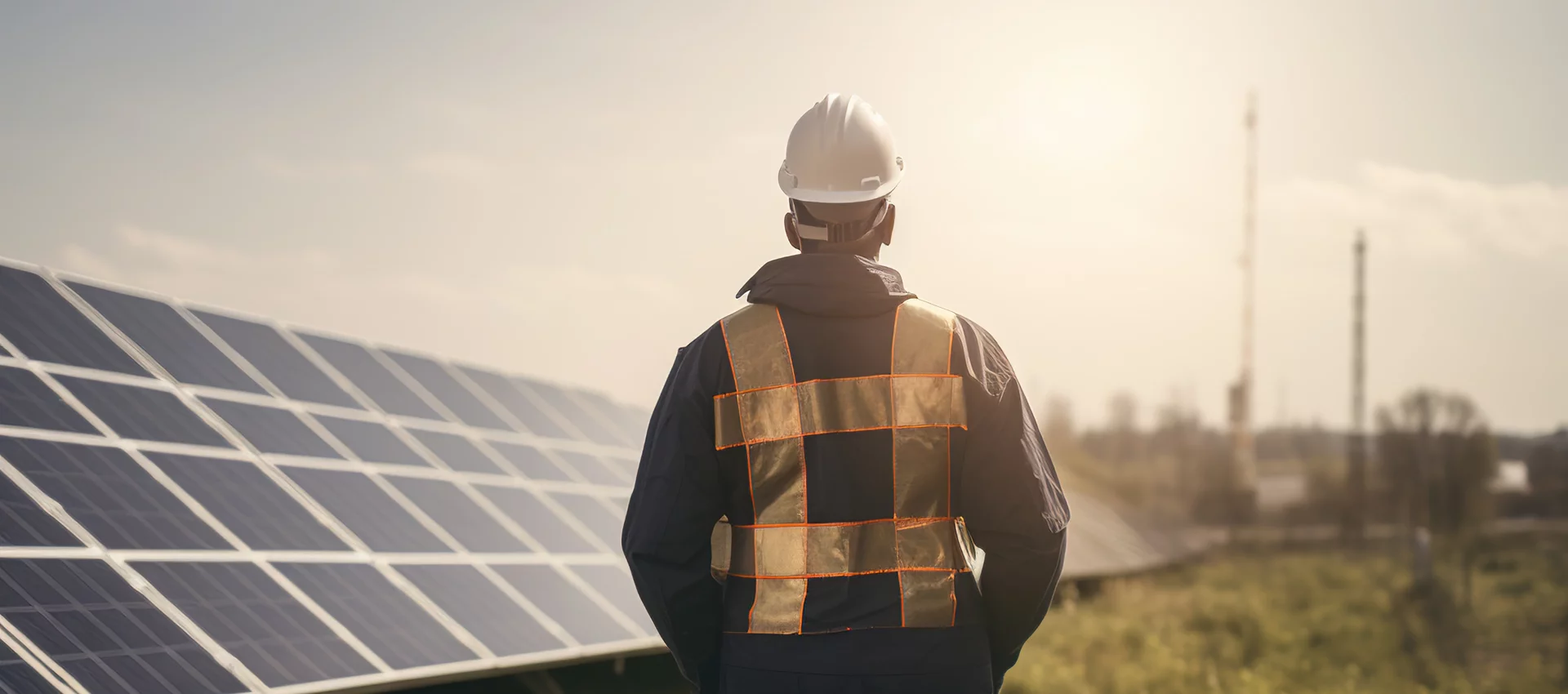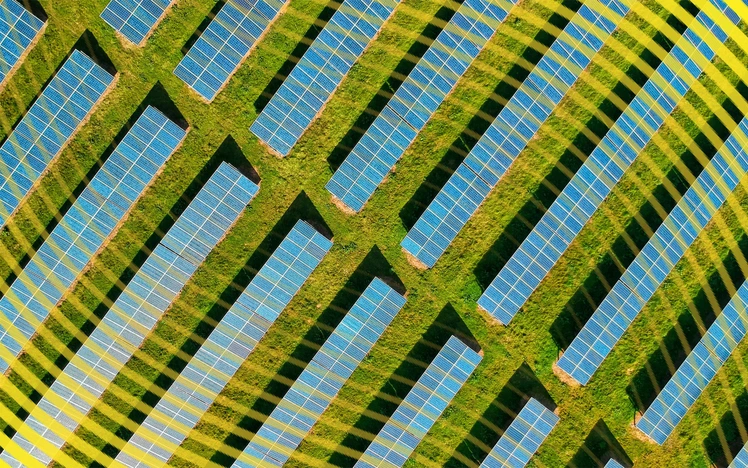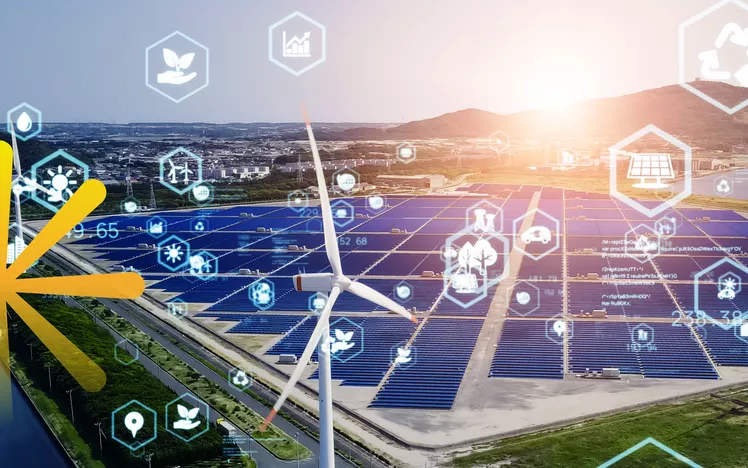
The cost-effective benefits of embracing predictive maintenance services for optimized solar operations
The era of predictive maintenance in solar photovoltaic (PV) plant operations is (almost) upon us. There are novel approaches that exist today, but the accuracy of these approaches isn’t quite up to par with raicoon’s flagship promise: 100% fault detection and zero false alarms.
In order for these novel approaches to work as intended, solar plant owners, managers, and service providers must make use of a reliable data collection system in which historical data can be sampled and stored.
But this is how things stand: The way in which the vast majority of PV plants are operated is not conducive to the successful implementation of predictive maintenance.
PV plant operations is on the cusp of a grand-scale transformation — one fueled by ongoing advancements in artificial intelligence and predictive analytics.
But today, the traditional strategies of preventive and corrective maintenance remain the bedrock of PV plant operations. The industry still grapples with hurdles that delay the full-scale adoption of predictive maintenance.
These hurdles include:
- A lack of comprehensive maintenance logs
- A lack of accurate model training
- A lack of collaboration and accountability
- Error thresholds in measuring equipment (resulting in noisy data)
- Data processing latency
raicoon, with its multi-level smart ticket system and detailed maintenance logs — filled to the brim with labeled, actual on-site data — is uniquely positioned to make significant strides in predictive maintenance for solar PV systems. Standardizing the use of capabilities such as those in the raicoon system will set a pioneering course for the rest of the industry to follow.
Unpacking predictive maintenance: Revolutionizing the efficiency of solar PV plant operations
While operations can be — and should be — automated, the physical act of maintenance, as of yet, cannot. And this physical process of maintenance is crucial to the efficiency and longevity of solar plants.
Today, there are two main approaches to maintaining PV plants:
- Preventive maintenance – follows manufacturers’ guidelines to ensure smooth operations and is performed at regular intervals
- Corrective maintenance – involves actions taken to rectify unexpected failures, with an aim to minimize revenue loss
Predictive maintenance, on the other hand, uses artificial intelligence, machine learning algorithms, and extensive, real-time monitoring data to generate an accurate model of plant operations under standard conditions. With this data-informed model, advanced predictive modeling algorithms can forecast potential future events, enabling solar PV plant service providers to proactively anticipate and optimize preventive and corrective actions. In short, predictive maintenance enables technicians to address faults and inefficiencies before they occur.
The end result? A PV system that’s more readily available for energy production, and thus, maximum yields.
Predictive maintenance is the future the solar industry is inching towards.

The successful implementation of predictive maintenance requires a continuous source of reliable, high-quality data, expertise in data science (to build the algorithms that aggregate, clean, and interpret the data), and deep technical knowledge of solar PV plant operations. With these characteristics in place, predictive maintenance strategies can identify upcoming component failures and performance degradation, plan maintenance schedules, estimate the remaining useful life of components, and detect anomalies. Such proactive measures lead to:
- Reduced downtime
- Lower maintenance costs
- Increased energy yield
- Extended useful life of component parts
So what’s holding the solar industry back from the wide-scale adoption of predictive maintenance services?
In her paper “PV System Predictive Maintenance: Challenges, Current Approaches, and Opportunities”, Lisa Bosman speaks to the many things that can go wrong to cause actual PV system performance to deviate from the expected performance.
When asked what she believes is the main thing standing in the way of a wide-scale implementation of predictive maintenance services in the solar industry, she spoke to the fact that there is no one manufacturer of a PV system. There are multiple stakeholders — the solar panel manufacturer, the inverter manufacturer, the battery manufacturer, the solar installer or electrician, and so on — and it becomes difficult to assign accountability.
"For example, solar panels and inverters manufacturers do their own internal diagnostics; typically, you'll have to pay extra to access this information. but knowing how efficient or inefficient an inverter is offers little into knowing [the efficiency] from the system as a whole.
When we think about predictive manintenance we need to think about the system as a whole, all parts connected, because if one part doesn't work the whole thing doesn't work"
Dr Lisa Bosman, Purdue University professor
A system that consolidates and makes accessible information about the impact of any one component failure, as well as of response and repair and spare parts delivery times is a good place to start.
Most PV plants lack a comprehensive maintenance log from which historical data can be sampled and stored — a critical component for accurate model training.
This is where raicoon shines. Its multi-level smart ticket system and robust, data-filled maintenance logs uniquely position the autonomous operations center (AOC) to clear a path for predictive maintenance strategies for PV plants.
Predictive maintenance is a hot topic in the solar industry. Everyone wants to be doing it, but very few companies actually are. And those that are, have a large threshold for error.
Beyond the lack of accountability, or of standardized and reliable logs, there are still a few industry-wide hurdles to overcome. Data collected by onsite measuring equipment is often noisy, leading to imprecise measurements, and real-time data monitoring that is hampered by a latency in processing. Until PV plant systems can address these challenges, true predictive maintenance services will remain out of reach.
As things stand, predictive maintenance is more of a buzzword and talking point than a commonplace scenario.
There are a few more critical requirements that are often lacking:
- Firstly, a continuous source of high-quality and reliable data is essential. This data, generated by extensive arrays of sensors, provides an accurate snapshot of a plant's operations, ensuring the predictive models have a strong basis for making forecasts.
- Secondly, capitalizing on the insights provided by predictive maintenance services requires action from the involved technical organization. It’s not enough to have the data — gleaned insight must be acted on and weaved into existing workflows so the overall efficiency of the system is improved.
"To really benefit from predictive maintenance it also requires a technical organization that's able to handle the demands of spare parts management and optimized maintenance schedules. This is a transition that maintenance and technical companies in the field will need to go through.
Making proper use of the capabilities a system like the AOC offers is the way forward in setting the industry up to be successful in any wide-scale adoption of true predictive maintenance services"
Michael Edelbacher, CTO @ raicoon
- And thirdly, domain expertise in solar is crucial. Understanding the technical aspects of PV plant operations enables more accurate predictions and fine-tuning of predictive models. This knowledge, when combined with a comprehensive catalog of data, will significantly enhance the effectiveness of predictive maintenance strategies.
The potential rewards of predictive maintenance services are significant.
But to achieve widespread adoption the industry must address these challenges.
The potential impact of predictive maintenance on solar PV
Predictive maintenance promises a significant shift in the way solar PV plants are operated and maintained. This shift extends beyond increasing efficiency and cost-effectiveness — it will fundamentally transform workflows in solar PV operations.
Beyond the primary methods of preventive and corrective maintenance, predictive maintenance introduces a new dimension. With it, asset owners, managers, and service providers can anticipate potential component failures, optimize staff placements, and better predict spare parts needs.
The integration of predictive maintenance would enable technicians to proactively identify degradation of performance and remaining useful life of component parts, and allow for more efficient scheduling of planned maintenance — leading to cost-effective and more efficient operations.
In spite of the obvious benefits, predictive maintenance in the solar industry is still in its nascent stages. But thanks to rapid advancements in technology and AI and ML algorithms — automation of PV operations is transforming the industry — and for those that have made the change from manual to autonomous operations, predictive maintenance will be the next logical step.
raicoon: Paving the path for predictive maintenance
raicoon possesses a critical resource that many in the industry lack: Extensive maintenance logs, updated with an abundant stream of labeled data that is reflective of the actual situation onsite at PV plants. These logs contain a wealth of historical data essential for training accurate predictive models.
Realizing the potential of predictive maintenance will necessitate a more collaborative approach (including readily accessible data), more fine-tuning, and a higher fault detection accuracy than what’s commonplace today. raicoon autonomous operations center (AOC) is an advanced system that uses AI to monitor the health and efficiency of PV systems, detect faults with 100% accuracy, make informed decisions, transparently log data, and direct the appropriate personnel to execute corrective actions — autonomously.
The AOC is already reducing costs and boosting performance for PV systems. Taking on predictive maintenance services will further solidify its position as the leader in automated, AI-driven operations.
Whether you’re a solar asset owner, manager, or an O&M service provider, it’s time to start looking forward. Are your plants’ operations ready and optimized for the next wave of innovation?
raicoon AOC is just the tool to get you there. Book a demo with our team today.
You might also be interested in

raicoon autonomous operations center: boosting solar efficiency with adaptive certainty thresholds

Critical fire risks in solar panels – Ensuring safety on your rooftop

Driving solar innovation with workforce upskilling

Boosting solar system efficiency with diagnostic analytics

